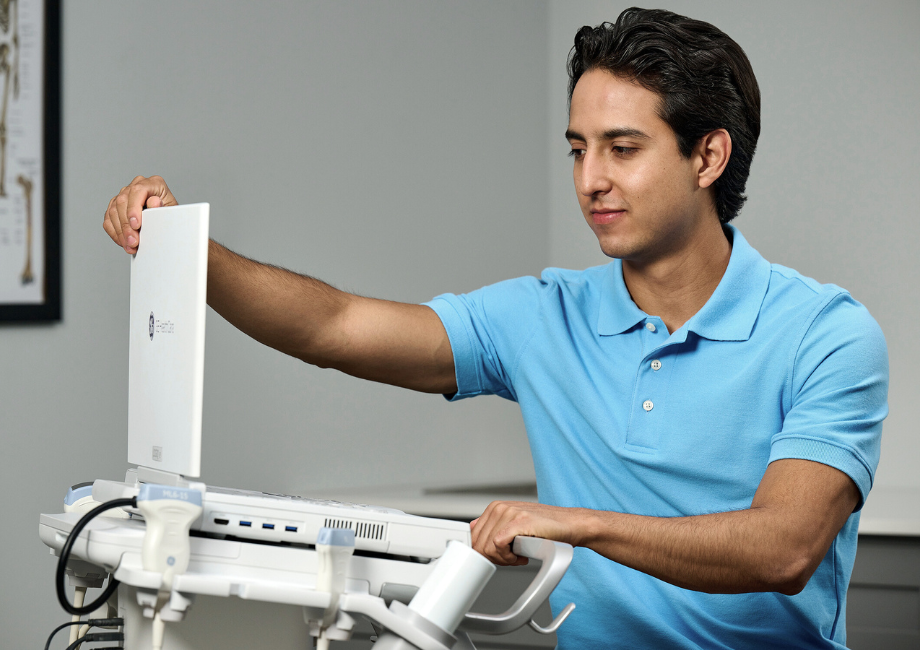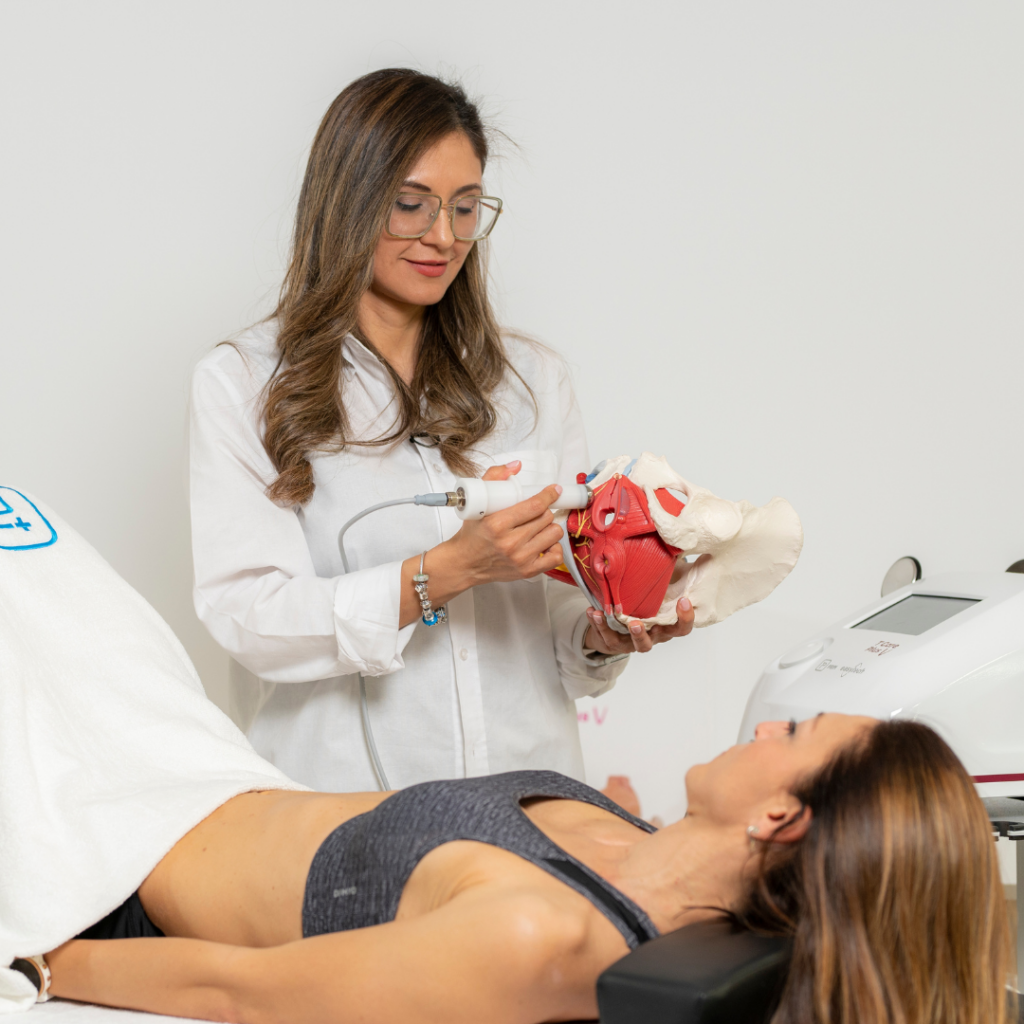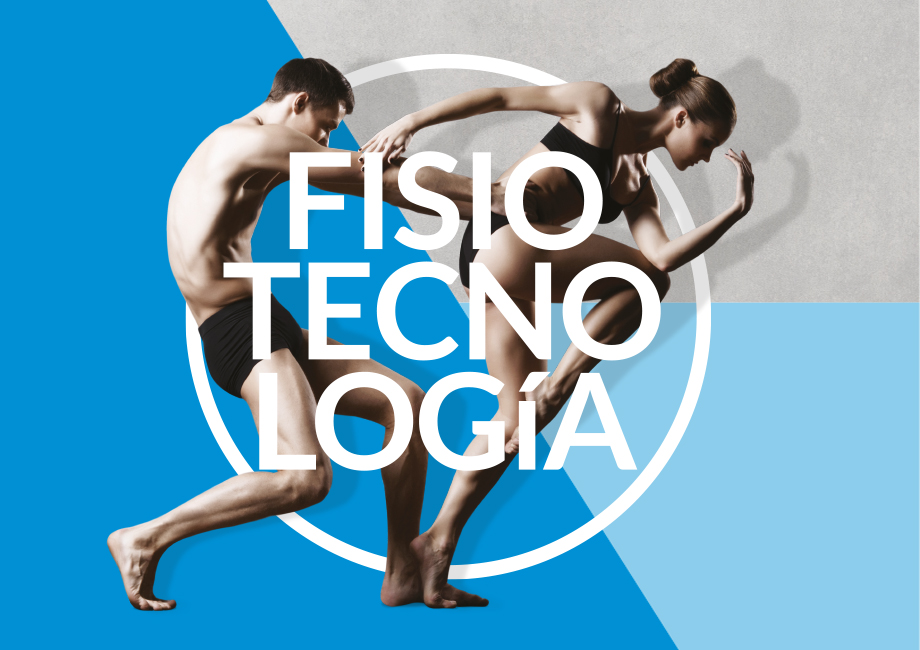
- What is ultrasound imaging?
- How has it spread in physiotherapy?
- The differences between medical and physiotherapeutic use
- Use of ultrasound in physiotherapy
- GE ultrasound line
- Would you like more information?
What is ultrasound imaging?
Ultrasound is a noninvasive diagnostic method that, using ultrasound emitted by special probes placed on the patient’s skin, makes it possible to visualize organs, glands, blood vessels, subcutaneous structures as well as muscle and tendon structures in numerous parts of the body. In addition, ultrasound constitutes one of the earliest approaches to the study of the human body.
How has it spread in physiotherapy?
In some foreign countries, physiotherapists have been using the ultrasound in clinical practice for decades; similarly, many Italian therapists have also begun to appreciate this tool. However, this year, in March, an important event legitimized its use in the world of physiotherapy: a judgment was issued by the Court of Udine that decreed that even the physiotherapist, not only can use the ultrasound, but even advocates its use in the interest of patients. The differences with respect to medical use remain to be considered, so let us look at them together.
The differences between medical and physiotherapeutic use
The doctor uses ultrasound for evaluative, monitoring, and most importantly, diagnostic purposes. The goal is to visualize the internal structures of the body and assess – when possible – the functionality and presence of any abnormalities. On the other hand, for the physiotherapist, we talk about Rehabilitation UltraSound Imaging (R.U.S.I.), i.e. ultrasound for rehabilitation purposes, which is used for functional assessments.

Use of ultrasound in physiotherapy
Ultrasound for rehabilitation purposes, is “a procedure used by physiotherapists to assess the morphology and function of muscle and related soft tissues during exercise and physical activities. It is used to assist the application of therapeutic interventions by providing feedback to the patient and the physiotherapist” (Teyhen, 2006). We are talking about an instrument that the physiotherapist uses for functional assessment procedures (L. 251/00) to carry out the profession’s own competencies and does not pose any clinical risk to the user. Thus, the ultrasound device is not used to make diagnoses of pathology, but to make more precise and reliable assessments of the morphology, size, and function of muscle and soft tissue structures, which are commonly performed by the practitioner through patient inspection and manual measurement. A detailed and reliable assessment allows more individualized treatment plans to be set up and provides more feedback to the patient when performing exercises.
GE ultrasound line
Easytech is the official reseller for the Italian market of a wide range of ultrasound devices from the American brand General Electric. Specifically Vscan Air CL Probe, Versana Active, Versana Essential, Versana Balance, Versana Premier, Logiq P9 XDClear R4 and Logiq e R9.
Would you like more information?
To learn more, contact us at info@easytechitalia.com or call 055 8455216.











